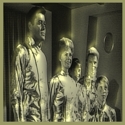
Important dates in space tourism (continued)
October 4, 2004 - SpaceShipOne, the first privately built spacecraft was first tested on June 21, 2004 with veteran pilot Mike Melvill at the controls. This innovative spacecraft has been developed by aerospace pioneer Burt Rutan with the contribution of ex Microsoft's Paul Allen. On Monday October 4, 2004, coinciding with the anniversary of the first flight of the space age (the launch of the Soviet Union's Sputnik I on October 4, 1957) SpaceShipOne, piloted by Brian Binnie, reached an altitude of 367,442 feet (almost 111 kilometers / 70 miles) above Earth. SpaceShipOne won the "X Prize", receiving a 10 million dollars check for the development of a new generation of aircraft for space tourism. Rutan welcomed the SpaceShipOne program as the beginning of an ambitious effort to open space to tourism, and announced a deal to realize a suborbital spacecraft for Richard Branson's Virgin company. Branson hopes to fly paying customers as soon as 2007 on his Virgin Galactic spaceships. The ticket should cost approximately 208,000 U.S. dollars.
October 1, 2005 - Gregory Hammond Olsen, an American entrepreneur and scientist, became the third private citizen to make a self-funded trip into space. Flown to the International Space Station with Soyuz TMA-7 and landed with Soyuz TMA-6 (October 10), Olsen is the third self-funded space tourist to visit the ISS, following Dennis Tito and Mark Shuttleworth. Gregory Olsen estimated the price of his space excursion at 20,000,000 U.S. dollars.
September 18, 2006 - Anousheh Ansari, an Iranian-American businesswoman, became the world's first female space tourist, the first female Muslim and first Iranian in space. Ansari is a member of the X Prize Foundation's Vision Circle. Along with her brother-in-law, she made a multi-million dollar contribution to the X-Prize foundation and the prize was officially renamed the Ansari X Prize in honor of their donation. The spacecraft blasted off from the Baikonur Cosmodrome in Kazakhstan, en route to the International Space Station, with Ansari becoming the fourth (and first female) space tourist. Her contract forbids disclosure of the amount paid, but previous space tourists have paid in excess of 20,000,000 million U.S. dollars. During her eight-day stay onboard the International Space Station, Ansari agreed to perform a series of experiments on behalf of the European Space Agency. She also became the first person to publish a weblog from space. Ansari returned to Earth after ten days with the Expedition 13 crew on the Soyuz TMA-8 capsule.
April 7, 2007 - Charles Simonyi, a Hungarian computer software executive, and former Microsoft employee, became the fifth space tourist and the second Hungarian in space. Simonyi has been an active philanthropist and Forbes ranked him as a billionaire in 2005. In early 2006, Simonyi expressed interest in becoming a space tourist and signed agreements with the space tourism company, Space Adventures, Ltd., for a ten-day mission to the International Space Station. He launched on board Soyuz TMA-10.
August 15, 2008 - The website Voyage2space.com opens. Here is the official press release: "Many people have ambitions, and a trip to space is often high on peoples wishes and dreams. The cost of such a venture makes it almost impossible for us to achieve our dream, though. However, thanks to some forward thinking by voyage2space.com, space tourism may just be the next big thing on your agenda in the not too distant future. Adventure tourism, such as trips to Antarctica or Mount Everest, has long been a profitable business. This can involve packages with prices as high as £100k and even higher. In recent years you may have heard of a newly emerging adventure niche, space tourism. The development of space tourism will follow the normal course of development seen for almost all consumer technologies and services. Regular tourism itself began as something only accessible to the wealthy, passenger flights on airlines were initially very expensive. VCRs, DVDs, PCs, etc. all started out as very expensive "toys". Eventually competition and economies of scale (i.e. mass production) take over and prices drop to a level everyone can handle. Space tourism has been criticized as being a "playground for the rich" and, while there may be some current truth to this, the vision for the future is to make space tourism affordable and available to everyone in just a few short years. Are you tired of the traditional holiday ventures? Been to all the major continents and want more? Done all of the extreme sports and just can't get that adrenaline rush anymore? The team at Voyage2Space have leaped forward a few years with the launch of www.voyage2space.com, a competition which will see someone visit space for just $20. So, if you've got the bug to travel and have always dreamed of going beyond the confines of Earth, then all you have to do is enter the competition at www.voyage2space.com."

